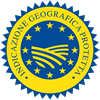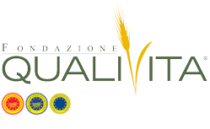Description
Vitellone Bianco dell’Appennino Centrale PGI is the fresh meat obtained from cows and bullocks of the Chianina, Marchigiana and Romagnola pure breeds, also defined as “white breeds from Central Italy”, between 12 and 24 months old.
Production Area
The production area of Vitellone Bianco dell’Appennino Centrale PGI is within the entire Umbria, The Marches, Abruzzo and Molise regions and the entire territory of the provinces of Bologna, Ravenna, Forlì-Cesena and Rimini, in the Emilia Romagna region; Benevento and Avellino, limitedly in some areas of Caserta in the Campania region; Frosinone, Rieti, Viterbo, parts of the provinces of Rome and Latina, in the Lazio region; Grosseto, Siena, Arezzo, Florence, Pistoia, Prato, Livorno and Pisa, in the Tuscany region.
Production Method
The calves must be fed exclusively with the mother’s milk until they are ready to be weaned. The calves can be pasture-raised, raised in free stalls or under semi-intensive conditions. After weaning, they are fed fresh and/or conserved fodder originating from natural or artificial fields and herbaceous crops typical of the indicated geographical area. The use of simple or composed concentrated animal feed and the integration of minerals and vitamins is also permitted. The nutritive standards must in any case be high, with a protein quota of between 13-18%, depending on the animal’s stage of development. At this stage, the animals can be kept in free stalls, in crates, or under semi-intensive conditions.
Appearance and Flavour
Vitellone Bianco dell’Appennino Centrale PGI meat is succulent and nourishing; it is fine-grained and has a vivid red colour. It is both firm and springy, with small flecks of white fat in the muscle.
History
The origins of Vitellone Bianco dell’Appennino Centrale PGI date back to the pre-Roman period. In fact, the Etruscans reared cows with the same common characteristics as those reared in the Apennines today. Today’s breeds are the result of the crossbreeding and selection of the Bos Taurus Primigenius breed. The Romagnola breed was selected from ancient breeds reared by the barbarian populations in the 6th and 7th centuries AD The Marchigiana, on the other hand, is the result of crossbreeding between the Romagnola and Chianina breeds, carried out by farmers in The Marche in the 19th century.
Gastronomy
Vitellone Bianco dell’Appennino Centrale PGI can be kept in the refrigerator for up to two days, wrapped in cling film. It is best grilled, fried, spit-roasted or oven cooked, although it is also ideal for boiling and using in stews. To maintain and enhance the tenderness, taste and flavour, it is extremely important to safeguard the liquids contained in the meat during all stages of handling: if the meat is dry, it will be tougher, leatherier, and have little taste and flavour. Vitellone Bianco dell’Appennino Centrale PGI is mainly known for being the meat used for the “Fiorentina” T-bone steak.
Marketing
The product is sold year-round as Vitellone Bianco dell’Appennino Centrale PGI. It can only be sold sliced by authorised butchers who are subject to controls, or packed in trays. Each anatomic cut of the half-carcasses must be fire-branded with the Vitellone Bianco dell’Appennino Centrale PGI mark and indicate the breed of origin: Chianina, Marchigiana or Romagnola, with the exception of lots comprised of more than one breed. The certificate of conformity must be displayed in the butcher’s shop to guarantee the traceability of the meat, which is sold in 18 different cuts: hind brawn, hind shankle, round of beef, lower rump, noce (inner part of the hindquarters), rump, flank, sirloin steak, chop, paunch, breast, lower shoulder, reale (dorsal ribs muscle), neck, anterior muscle, shoulder round of beef, shoulder pulp, clod.
Distinctive Features
The aroma and flavour of Vitellone Bianco dell’Appennino Centrale PGI meat are reminiscent of the fragrances of the plants in the central Apennine meadows and pastures on which these breeds of cattle graze. This meat is also one of the most prestigious animal products due to the combination of genetic heritage and natural rearing and feeding systems.

























